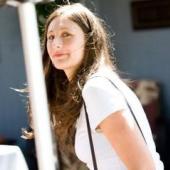Last year, the Minnesota Council of Nonprofits’ communications technology conference, “Remix/Refresh/Reload,” could have easily been called “The Twitter Conference.” Social media had hit the nonprofit world in a big way. And staffers who’d spent hours grooming their organizations’ Facebook pages and tweeting about their accomplishments found themselves in the spotlight. All day they were asked for advice by communications professionals eager to use the new tool, Twitter, that suddenly no one could do without.
This year, the story is slightly different. We’ve seen the best social media can offer—the current “Facebook Revolution” in the Middle East—as well as the worst (
The Social Network, Gilbert Godfried’s gaffe, Alexandra Wallace’s disturbing YouTube rant). It’s clear we’re in a new era of social media. But what does that mean for the arts organizations and artists who’ve already incorporated Twitter into their marketing plans?
Kathy Graves, a partner in Parenteau Graves Communications, a firm specializing in strategic planning, marketing and public relations, handles communications for Ten Thousand Things and the Jungle Theater. She’s seen the impact social media has at the box office: e.g., she credits an offbeat YouTube trailer for a mostly sold-out run of the Jungle’s recent production of
The Mystery of Irma Vep.
Graves acknowledges that social media’s benefits from a quantitative standpoint (in terms of “impressions,” the standard marketing unit of measurement, meaning the number of times a person saw or heard about a product, service or organization) aren’t always measurable. Still, experience has shown that even if impressions aren’t measurable, they’re real. Graves says she’ll upload a video to YouTube and send a link via a mass email, or she’ll post a positive review by a local arts critic on Facebook, and the response will be a plethora of “likes” and click-throughs. Graves says that’s evidence enough that she’s doing something right.
Reaching out, forging relationships
For every artist and arts organization, there are two compelling reasons to rely on social media to get the word out. For one, social media is free. For another, it’s a sure-fire way to reach people. Those factors were reason enough for the Guthrie Theater to employ a full-time social media manager, Carly Beetsch, who is the Guthrie’s expert on all things Twitter and Facebook. Beetsch says the Guthrie has about 25,000 followers on Facebook and 6,500 on Twitter.
But even those numbers don’t point directly to whether social media provides a major boost at the box office. And it’s not really expected to. While social media does help bring people to the theater through initiatives like online-only giveaways, the Guthrie’s social media efforts are actually focused on making the institution more open and inviting, and less institutional, in order to court a younger, more tech-savvy generation of theater-goers.
To this end, Beetsch posts images from the Guthrie’s theaters and various workshops (sets, costumes) to give online visitors a behind-the-scenes look at the inner workings of the largest and best-known theater in the state. “Our goal is to show how relatable and accessible the theater really is,” Beetsch says. People have responded favorably. The Guthrie receives lots of “likes” on photos, anecdotes and show trailers. Last year’s trailer for
Macbeth was a big sensation.
Individual artists are also using social media to reach out. Clarence Wethern, a Twin Cities-based stage, screen and voice-over actor, has been communicating with fans and fellow artists for several years using Facebook and Twitter, which he updates using apps on his iPhone. But for Wethern, social media is less about getting people in the door than it is about meaningful connections with others.
“I honestly can't say for sure if anyone has ever come to see my shows because of Twitter or Facebook,” he says. “What I can say is that it certainly doesn't hurt to forge and maintain relationships with people” using social media. For Wethern, that’s been the real outcome: “One super cool thing that has happened as a result of being on Twitter is that I'm engaging on a one-to-one level with a lot of creative, wonderful people I may not otherwise have known.”
Early adopter, community builder
For the Minnesota Fringe Festival, social media was an outreach initiative adopted early on as a component of an overall communications strategy. According to Matthew Foster, the Fringe’s communications director, the nature of the Fringe itself—social theater—dovetailed nicely with the advent of social media. In fact, he says, “Fringe had social media before social media happened. We were an early adopter of blogs, and we’ve had online audience reviews, on our website, for a good nine or 10 years now.” Facebook and Twitter, he adds, just provided the Fringe with new platforms.
During peak Fringe activities, Foster uses TweetDeck to manage the virtual, spontaneous and organic community building that occurs. The #mnfringe hashtag, for example, was a trending topic for Minneapolis-St. Paul during this year’s lottery. The Fringe’s growing profile on Twitter, he adds, has helped the community grow throughout the year—not just during annual festival time. People continually learn about the festival via online discussions. Then, when Fringe season rolls around (July and August), more people are talking not just about which shows they’ve seen and recommend, but the value of the Fringe in general, thus generating community awareness and long-term support.
The drawbacks: instantaneity, regret
But like any other technology, social media has drawbacks. The Fringe Festival’s integration of social media into its various communication outlets has allowed Foster to clearly see the pros and cons. An artist himself, he’s concerned that the rise of social media may be taking a toll on the arts. “Social media doesn’t allow room to make mistakes, and it doesn’t allow room to brood and to develop,” Foster says. “Everything has to happen in real time.”
When artists are constantly plugged in and receiving instant feedback, Foster explains, there’s less opportunity for the reflection often necessary to incubate genuine artistic innovation. Our most painful and private moments are often the kernels of breakthrough and revelation—the seeds of art. Foster’s also concerned that because social media is both instantaneous and archival, there’s no margin of error.
People in many professions, including entertainment and the arts, have ruined their own careers with hastily written tweets. Actor and comedian Gilbert Gottfried, the long-time voice of the AFLAC duck, recently got himself fired for tweeting tasteless jokes about the earthquakes and tsunami in Japan.
Both Foster and Wethern admit they’ve sent out tweets or status updates they later wished they hadn’t—even if none of them were Gottfried-level fails. But Wethern has a solution: “My Twitter account is just me, and I tweet a lot of jokes or will tweet about something that's just going on with me personally, and sometimes I'll tweet something that's too whiny or emo or mean, etc., and if I regret it, I'll just go back and delete it, because I have to walk a line between being real and being presentable to the public.”
Art vs. Twitter?
George Sutton, executive director of James Sewell Ballet, is actually rather skeptical about the benefits of social media. His staff has invested many hours in the company’s Facebook presence (JSB doesn’t Twitter), and so far, the numbers haven’t added up as far as he’s concerned. JSB already has a loyal following, but using Facebook to woo a new generation of dance enthusiasts has proved a tough nut to crack; Sutton says there’s no evidence the company’s social-media presence has brought in any new patrons. Still, JSB isn’t writing off social media just yet. “James Sewell Ballet has invested itself in developing a presence in the social media realm,” Sutton says. “We are still exploring how to maintain currency there.”
Sutton also shares some of Foster’s concerns about the broader implications social media holds, not just for the future of art, but for culture as a whole. “Sharing information is not the same thing as sharing an experience…or is it,” he asks. Sutton argues that the recreational or cultural activities people choose to engage in reflect a lot about the culture as a whole. We define ourselves and our society by what’s meaningful to us, and how we socialize with other people.
In the past, Sutton says, we (as a culture) prized activities like art and religion. What does it mean, he wonders, when our primary means of sharing ourselves occurs virtually on Facebook or Twitter? Social media’s avenues of communication play a role in shaping our sense of humanity today, and so far, even though we’re using social media every day, we’re still largely unaware of what it means for us long-term.
For Twin Cities performing artists, social media has mostly been a powerful tool to build community among artists, audience members and supporters. Such support networks for artists existed long before social media entered the picture, but tools like Twitter and Facebook have escalated artists’ ability to network, meet other artists whose work they enjoy, and make meaningful connections with patrons.
Clearly, there’s peril as well as promise in social media, and the long-term impacts of social media on art and culture remain to be seen. For now, however, social media remains a free, fun and friendly way for local performing artists and organizations to introduce their work to a new generation.




